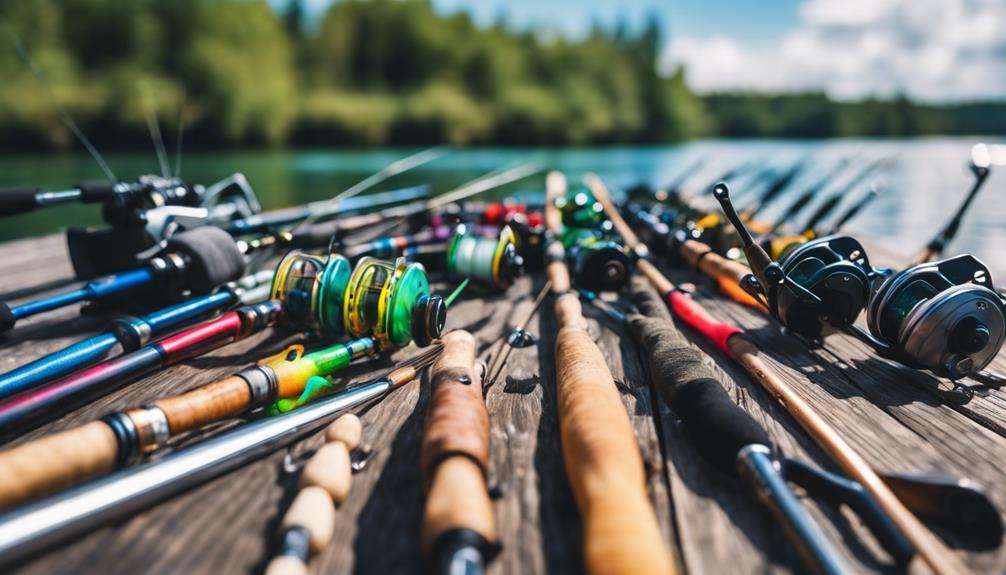Why Alaska Fly Fishing is a Must-Try Experience
Alaska is renowned for its breathtaking landscapes and pristine waters, making it a prime destination for anglers seeking the ultimate fly fishing experience. The state’s abundant rivers and lakes are home to an array of fish species, including salmon, trout, and grayling. Whether you are a seasoned angler or a beginner, Alaska fly fishing offers an unparalleled adventure that combines the thrill of the catch with the beauty of nature. In this guide, we will explore the essential Alaska fly fishing goods you need to make your fishing trip successful and enjoyable.
Essential Alaska Fly Fishing Gear: What You Need to Bring
When preparing for your fly fishing trip in Alaska, having the right gear is crucial. At a minimum, you’ll need a quality fly rod, reel, and line suited for the types of fish you aim to catch. A 9-foot, 6-weight fly rod is a versatile choice for most freshwater fishing conditions in Alaska, allowing you to target various species effectively. Additionally, investing in a durable fly reel with a reliable drag system will ensure you can handle those powerful fish when they strike. Don’t forget to include a selection of flies that mimic local baitfish, as well as leaders and tippets that cater to the specific fishing conditions.
Choosing the Right Flies for Alaskan Waters
Selecting the right flies is one of the most critical components of successful fly fishing in Alaska. The state’s diverse ecosystems mean that different regions may require different fly patterns. For instance, during salmon runs, large streamers and egg patterns can be particularly effective. For trout and grayling, smaller dry flies and nymphs, such as Adams or Pheasant Tail, often yield great results. Researching local hatch charts and speaking with local guides can help you identify which flies will be most productive during your trip. Remember that having a well-rounded selection of flies will increase your chances of attracting fish in various conditions.
Investing in Quality Clothing and Footwear
Alaska’s weather can be unpredictable, so having the right clothing and footwear is essential for a comfortable and successful fly fishing trip. Waterproof and breathable waders are a must-have for staying dry while wading in the rivers. Look for insulated options if you plan to fish during the colder months. Layering your clothing is also advisable, as temperatures can fluctuate throughout the day. Investing in high-quality, non-slip wading boots will provide stability on slippery rocks and ensure you can navigate the waters safely. Don’t forget a good hat and polarized sunglasses to protect yourself from the sun’s glare and to spot fish more easily underwater.
Understanding Local Regulations for Alaska Fly Fishing
Before heading out on your fishing adventure, it’s crucial to familiarize yourself with Alaska’s fishing regulations. The state has specific rules regarding fishing seasons, limits, and required licenses. Most anglers need a valid Alaska fishing license, and additional permits may be necessary for certain species or locations. Regulations can vary significantly between different regions and even specific bodies of water, so always check the latest rules from the Alaska Department of Fish and Game. Following these regulations not only helps conserve the fish populations but also ensures you have a trouble-free fishing experience.
The Best Locations for Fly Fishing in Alaska
Alaska is teeming with incredible fly fishing locations, each offering unique experiences. Renowned spots include the Kenai River, famous for its large salmon runs, and the Bristol Bay region, which boasts some of the best trout fishing in the world. Other notable areas include the Kvichak River, the Tongass National Forest, and the remote streams of the Arctic National Wildlife Refuge. Each location presents different fishing opportunities based on the season and local fish populations. Whether you’re looking for a guided experience or exploring on your own, Alaska’s diverse waters cater to all types of anglers.
Hiring a Local Guide: Is It Worth It?
While many anglers enjoy the thrill of exploring Alaska’s waters independently, hiring a local guide can significantly enhance your fishing experience. Local guides possess invaluable knowledge of the area’s best fishing spots, fly patterns, and techniques that can lead to a more productive day on the water. They can also provide you with necessary gear and ensure you are following all regulations. Although hiring a guide comes at a cost, the potential for a successful catch and the chance to learn from an expert can make it well worth the investment, especially for those unfamiliar with Alaskan waters.
Post-Fishing Care: Properly Handling and Releasing Fish
After a successful day of fishing, it’s essential to handle your catch responsibly to ensure the sustainability of Alaska’s fish populations. If you plan to release your fish, wet your hands before handling to minimize damage to their protective slime coating. Use barbless hooks whenever possible, as these make it easier to release fish with minimal injury. If you’re keeping your catch, ensure you follow local regulations regarding size and limits. Properly storing your fish on ice will maintain its quality. Practicing ethical fishing techniques not only preserves the environment but also contributes to the ongoing health of Alaska’s rich aquatic ecosystems.
Conclusion: Gear Up for Your Alaskan Adventure
In conclusion, Alaska fly fishing is an unforgettable experience that requires the right gear, knowledge, and respect for the environment. By investing in quality Alaska fly fishing goods and being informed about local regulations, you can make the most out of your fishing adventure. Whether you’re casting a line in the Kenai River or exploring remote backcountry streams, the breathtaking scenery and exhilarating fishing opportunities await you in the Last Frontier. So gear up, embrace the challenge, and enjoy the beauty that Alaska has to offer!
